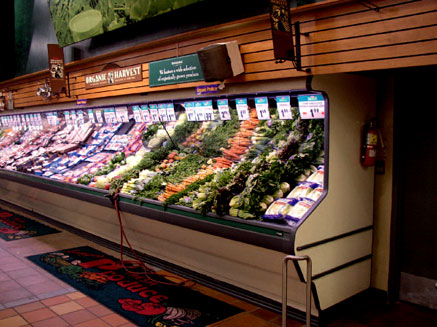light emitting diodes
The use of LEDs for shelf life extension of spinach and kale

The spectral composition of light-emitting diodes (LEDs) has been reported to result in higher yield, prevent wilting, and reduce thermal damage to plants. The use of LEDs for postharvest storage and shelf life extension has been limited, but the potential of this technology will allow for greater applications in horticulture and the food industry. In this experiment, ‘Winterbor’ kale (Brassica oleracea L.) and ‘Melody’ spinach (Spinacia oleracea L.) plants were measured for photosynthesis response and stomata response under 14 different wavelengths of light.
The data collected from the measurements were used to select two different wavelengths of LEDs and determine the proper irradiance levels for an LED irradiance storage test on spinach and kale. The hypothesis was that by selecting a wavelength that results in stomata closure and selecting an irradiance level at the light compensation of the plant, the plants can be stored successfully for a longer period, compared to conditions under fluorescent light or no light.
Treatments of the blue lights (ranging from 405 nm to 470 nm), red lights (ranging from 624 nm to 661 nm), and amber light (595 nm) were effective at increasing the stomatal opening, while the green lights (ranging from 501 nm to 560 nm) resulted in reduced stomatal opening. For spinach, the light response curve resulted in 500 nm and 560 nm having a light compensation point at 65.3 and 64.7 µmol m-2 s-1, respectively. For kale, the light compensation points of 500 nm and 560 nm were at 50.8 and 44.1 µmol m-2 s-1, respectively.
For the storage test experiment at room temperature, kale and spinach were stored under four different treatments: dark treatment as a control, standard white fluorescent light (at 50 µmol m-2 s-1), and 500 nm and 560 nm LED wavelengths (at 55 µmol m-2 s-1). Shelf life testing of kale resulted in the lowest moisture loss of 40% at 560 nm treatment and 41% moisture loss for spinach. The control (dark) had the highest moisture loss at 54% for kale and 52% for spinach.
A visual assessment scale was monitored throughout the experiment and results showed a better visual quality in kale under 560 nm compared to the lowest visual quality under the dark treatment by day 4. For spinach, the visual quality for 560 nm treatment followed a similar pattern as fluorescent and 500 nm, resulting in a poor-quality product by day 4 and the lowest-quality product by day 5. The LED treatments improved the shelf life of spinach and kale which was the resultant of stomatal aperture closure, photosynthetic rate near light compensation point and stability of atmospheric moisture content.
Link/url: https://escholarship.mcgill.ca/concern/theses/m039k754v
